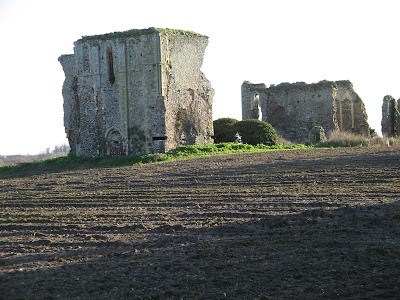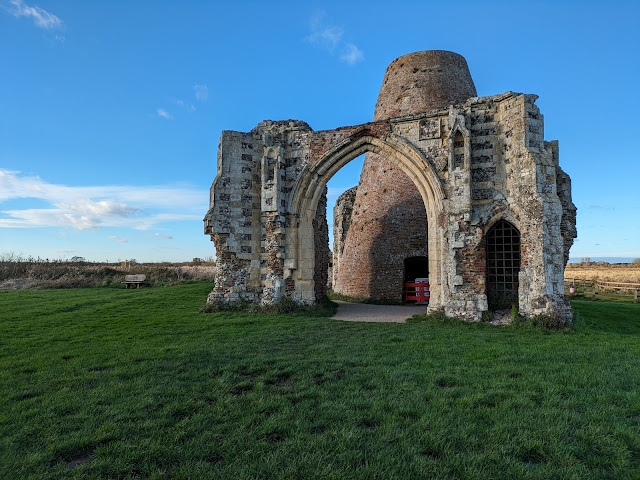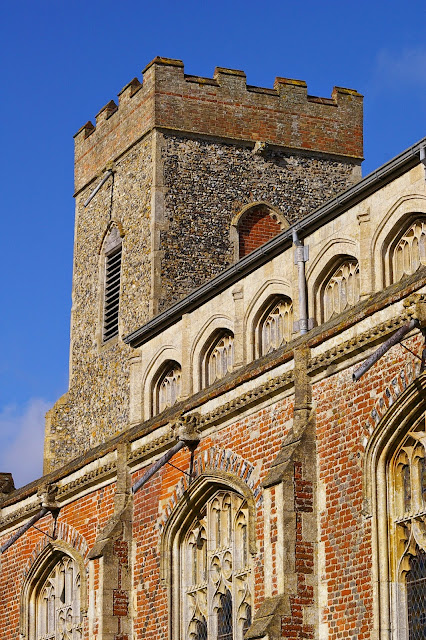Holy Rood of Bromholme

I parked on the promenade at Walcott and headed towards Mundesley. Gulls wheeled overhead while others stood at the tide line. Near the shoreline Sandeling ran about like clockwork toys on the sand and Turnstones, well, turned stones! In the bitter wind I thought of Mary. Her name in Hebrew Miryam is derived (some say) from the words Mar Yam, Bitter Sea. Bitter wind! Bitter sea! It seemed about right for a Lenten walk!
At the end of a line of bungalows a flight of steps led off the beach. If you come this way you can’t mistake it! There’s a red dog poo bin at the top! From there I followed the rutted track and crossed the main road. Ahead of me was the archway and ruined gatehouse of what had been Bromholme Priory – my destination! The wonder-working Holy Rood of Bromholme, to which pilgrims flocked, was said to be a piece of the True Cross. Found by St. Helena in Jerusalem, it had been brought to England after Constantinople fell to the Muslim armies. After the dissolution of the monasteries, in Henry VIII reign, the once grand building became a stone quarry for the local community and the relic was lost.
Skirting left along the boundary walls I got glimpses of the ruins through the hedge. What, I wondered, was I doing visiting a priory that’s no longer there and a relic that - even if it had been genuine in the first place - was long gone? Walking the Way of the Cross, perhaps! Confronting loss!? Something like that!
I stopped to trace the sign of the cross on my forehead, where I was marked at my baptism! It too is sort of there and not there even though it was renewed in soot on Ash Wednesday and again with healing oils when I was anointed! I walked back along the road finding courage to face some of the sadness of the broken world and some of my own losses too. By the time I got back to the sea front, I could taste the bitterness through and through!
On the promenade was a fish and chip shop still boarded up against the winter gales! I resolved I’d return some day to eat fish on the seashore and celebrate the Risen Christ! With salt and vinegar I wondered!



Comments